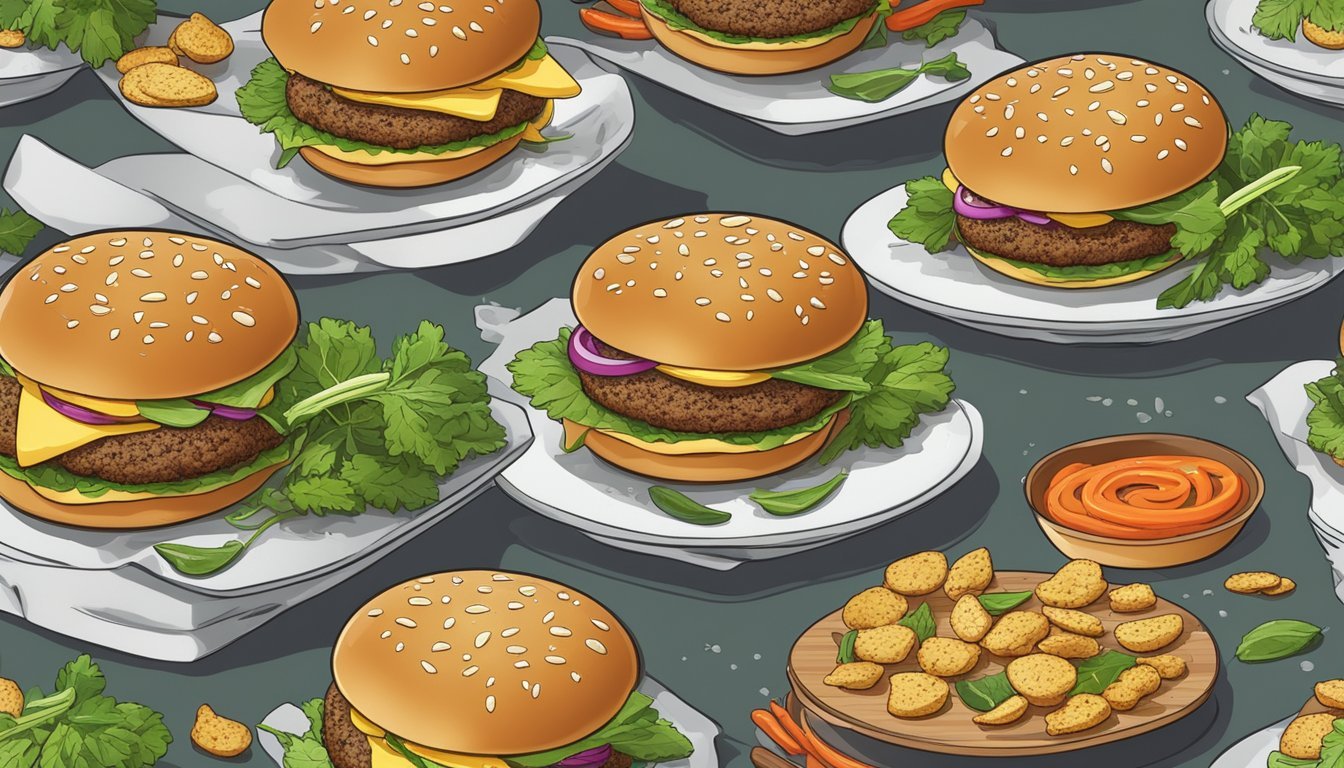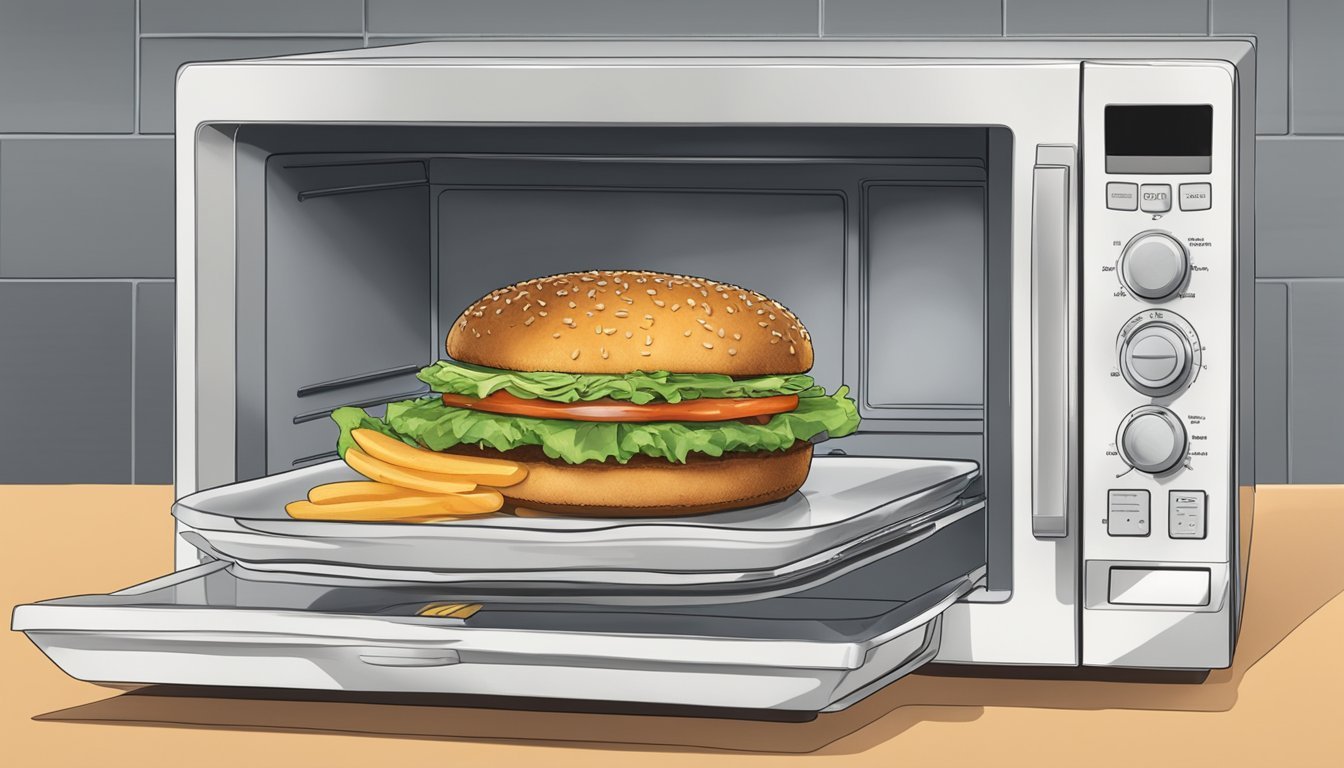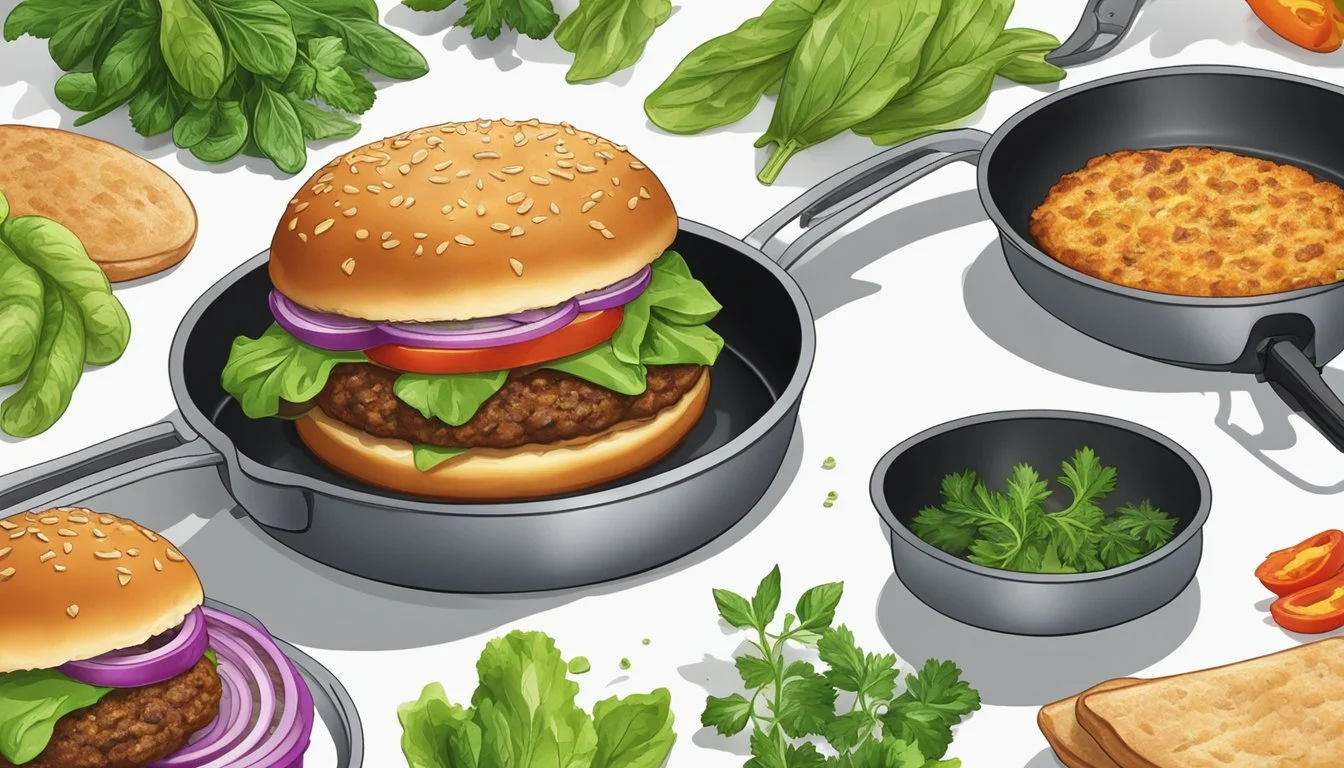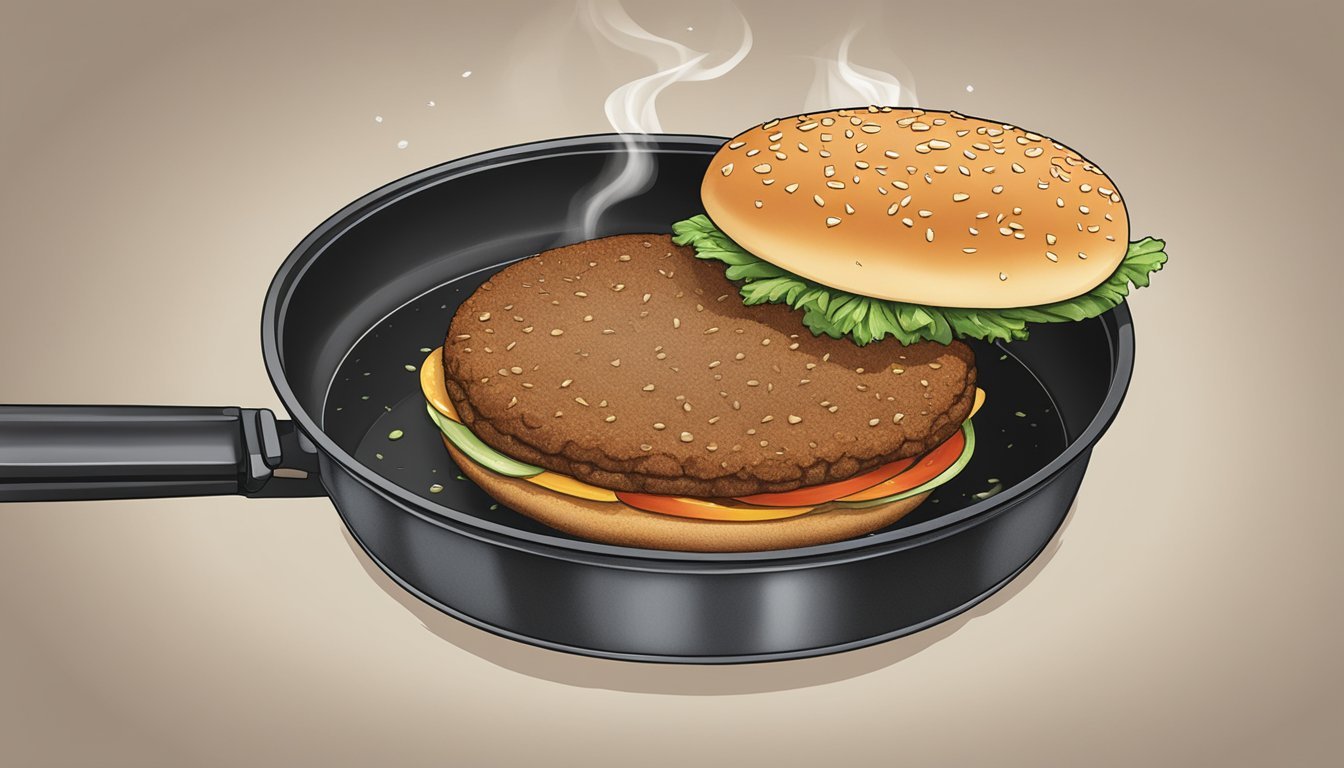Best Way to Reheat a Veggie Burger and Keep It Firm
Expert Tips for a Satisfying Meal
Reheating a veggie burger presents a unique set of challenges, as the goal is not only to warm the burger but also to maintain its structural integrity and texture. A good veggie burger should have a firm, satisfying bite and robust flavor, qualities which can easily be diminished if not reheated properly. The key to reheating these plant-based patties lies in the method chosen, which can affect the texture and moisture content of the final product.
The oven and stovetop are typically preferred for reheating veggie burgers, as they provide even heat distribution and allow for greater control. They tend to preserve the firmness of the veggie burger better than the microwave, which can sometimes create a soggy texture. It's important to remember that veggie burgers are composed of various ingredients like beans, grains, and vegetables, which all react differently to heat. This is why a careful, gentle reheating process is crucial to avoid overcooking or drying out the patty.
Adhering to best practices, like using a preheated oven or a properly heated pan, and avoiding overcooking, ensures that the veggie burger retains its texture. Covering the burger with a damp paper towel when using a microwave or brushing it with oil when using an air fryer can also help in maintaining moisture. By following these techniques, one can enjoy a reheated veggie burger that is both warm throughout and pleasantly firm to the bite.
Understanding Veggie Burgers
A veggie burger is a complex creation that integrates various flavors and textures, engineered to deliver a satisfying experience akin to traditional meat burgers. The challenge lies in preserving the burger's integrity and appeal during reheating.
Components of a Veggie Burger
Patty: Veggie burgers typically feature patties made from a blend of vegetables, grains, and legumes to offer a balance of flavors and textures. Essential components may include:
Vegetables: Such as onions, mushrooms, or peppers.
Legumes: Beans and lentils for protein and fiber.
Grains: Quinoa or rice to provide body and calories.
Toppings and Bun:
Toppings: Lettuce, tomato, and cheese add freshness and depth.
Bun: The bun completes the burger, often whole-grain for extra fiber.
Science of Keeping Burgers Firm
Maintaining the structural integrity of a veggie burger patty during reheating hinges on specific factors:
Moisture Content: Ensuring adequate but not excessive moisture prevents the patty from falling apart.
Binding Components: Elements like breadcrumbs or oats can help maintain the patty's shape.
Reheating Method: Applying gentle heat allows the patty to warm through without becoming mushy. For example, pan-cooking a defrosted veggie burger on medium-low heat for 4-6 minutes per side may preserve firmness.
By understanding the composition and reheating characteristics of veggie burgers, one can best approach the task of warming them while keeping the patty firm and enjoyable.
Preparation Before Reheating
Prior to reheating a veggie burger, certain steps must be taken to ensure the patty remains firm and flavorful. Proper preparation sets the stage for optimal reheating results.
Bringing to Room Temperature
Taking the veggie burger out of the refrigerator and letting it sit out until it reaches room temperature helps to reheat it more evenly. A patty straight from the fridge will take longer to warm in the center, which can result in overcooking the outside. It's best to allow 15-30 minutes for the burger to reach room temperature before proceeding to reheat it.
Disassembling Burger Components
A leftover burger typically consists of various components that may include the bun, lettuce, tomatoes, and condiments, in addition to the veggie patty. Disassembling these burger components is crucial because they each have different heating requirements. The patty should be separated from the bun and other toppings. If the burger was stored fully assembled, one should carefully remove the patty and place it on a metal rack or a plate, preparing it for the reheating process. The bun and other components should be set aside and, if necessary, reheated separately to maintain texture and taste.
Reheating in an Oven
Reheating a veggie burger in an oven is a straightforward method to maintain its flavor and texture. The proper use of a baking sheet and the optimal temperature setting are crucial for keeping the burger firm and juicy.
Using a Baking Sheet
To begin, one should preheat the oven to the temperature that will warm the veggie burger without drying it out. It is then recommended to place the veggie burger on a baking sheet, which will facilitate an even reheating process. One might prefer to cover the veggie burger with aluminum foil to prevent it from drying and to help retain moisture, ensuring the patty remains juicy.
Preparation:
Preheat the oven.
Wrap the patty in aluminum foil.
Set on a baking sheet.
Steps:
Place the baking sheet in the oven once it has reached the desired temperature.
Allow it to cook for the recommended time, ensuring it heats thoroughly.
Note: Using a baking sheet helps to distribute the heat evenly, which is essential for reheating leftovers and preventing sogginess.
Optimal Oven Temperature
Selecting the right temperature for reheating is vital to restoring the veggie burger's delectable taste and keeping it firm. A moderate oven temperature of around 350°F (around 175°C) is generally recommended. This temperature range warms the veggie burger efficiently without compromising its moisture or structural integrity.
Temperature Guide:
Low (300°F - 325°F): Suitable for dense, heavy patties.
Moderate (350°F - 375°F): Ideal for most veggie burgers, ensuring they remain flavorful and firm.
High (400°F): Only for a quick warm-up, as it might risk drying out the burger.
Duration:
Typically, it takes about 10-15 minutes to thoroughly reheat a veggie burger, but one should always check the center's temperature to confirm it has been warmed adequately.
Tip: Avoid overheating as high temperatures can compromise the veggie burger's texture, making it dry and less appealing.
Reheating on the Stovetop
When reheating a veggie burger on the stovetop, the primary goals are to preserve the texture and moisture content. This section covers two effective methods: using a skillet and controlling heat and moisture to maintain the firmness of the burger.
Utilizing a Skillet
For an effective stovetop reheating process, one should utilize a skillet, preferably a cast-iron skillet for its even heat distribution. The skillet should be preheated over medium-high heat before adding the patty.
Instructions:
Preheat the skillet on medium-high heat.
Lightly coat the skillet with a small amount of oil or butter.
Place the veggie patties in the oiled pan.
Heat each side for 2-3 minutes until thoroughly warmed and the exterior gains a slightly crisp texture.
Managing Heat and Moisture
Managing heat and moisture is crucial in preventing the veggie burger from becoming too dry or soggy. One can add a little water to the skillet and cover it with a lid, creating steam that helps keep the burger moist.
Tips:
Add a tablespoon of water to the skillet before covering it with a lid. This will introduce steam and prevent the burger from drying out.
Keeping the cover on for a portion of the reheating time helps retain moisture inside the veggie patty.
Monitor the patties carefully and adjust the heat as necessary to avoid overcooking.
Reheating in a Microwave
When reheating a veggie burger in the microwave, the focus should be on maintaining the burger's firmness while ensuring it is heated evenly. Proper technique and moisture management are crucial to avoid sogginess.
Microwave Techniques
To reheat a veggie burger in the microwave, one should start by placing the patty on a microwave-safe plate or dish to ensure safety and avoid any potential chemicals leaching into the food. Covering the burger with a microwave-safe lid or another plate can help trap steam and heat the burger more evenly. It's important to use a medium power setting, approximately 50-70%, to evenly distribute heat and prevent the edges from becoming too dry or tough.
Power Setting: Set microwave to medium (50%-70% power).
Speed Up Process: If in a hurry, increase power, but monitor closely to prevent overcooking.
Pause Technique: Pause halfway to check burger temperature and turn the patty if needed to ensure even reheating.
Avoiding Sogginess
The biggest challenge when microwaving veggie burgers is retaining a firm texture without ending up with a soggy patty. To combat this, one can place a paper towel underneath the burger to absorb excess moisture. Additionally, one might consider heating the patty separately from the bun to keep both components at their ideal textures.
Paper Towel Use: Put a paper towel under the burger on the plate.
Patty Reheating: Reheat patty separate from bun to maintain firmness.
Stay Juicy: Sprinkle a few drops of water on the patty before microwaving to keep it juicy.
By carefully managing the microwave settings and the moisture levels, it is possible to revive a veggie burger that retains its firmness and tastes as good as when it was first made.
Reheating on a Grill
When reheating a veggie burger on a grill, the key is to restore its inviting texture and infuse that distinct flame-grilled taste without compromising its firmness.
Achieving a Charred Texture
To impart a pleasing charred texture to the veggie burger, one must first preheat the grill to a medium-high heat. Positioning the veggie burger directly over the heat source allows the exterior to develop a crispy layer that echoes fresh grilling. This method typically takes a few minutes per side, but vigilance is essential; one must constantly monitor the burger to prevent burning and ensure an even char.
Oil and Temperature Control
Using oil judiciously is crucial when reheating a veggie burger on a preheated grill. A light brushing of oil on the burger can prevent sticking and aid in achieving the desired texture. It's important to manage the temperature carefully:
Preheat the grill to a medium level before placing the burger.
Apply oil with a brush or spray to the burger for a non-stick experience and to add a subtle crispiness.
Monitor the heat to avoid overcooking; the goal is a firm burger that retains moisture and avoids falling apart.
Consistent handling ensures the veggie burger is warmed through while maintaining its integrity.
Utilizing an Air Fryer
When it comes to reheating a veggie burger, using an air fryer can ensure it retains its firmness and is heated through to a safe internal temperature. Precise temperature settings and careful placement in the basket are critical factors.
Air Fryer Settings
For a veggie burger, the air fryer should be set to a moderate temperature to avoid drying out the patty. Here's a recommended approach:
Preheat the air fryer to 350°F (177°C).
Reheat the veggie burger for about 3-4 minutes. Use a food thermometer to check that the internal temperature has reached 165°F (74°C), the safe internal temperature for reheated foods.
Basket Placement
Proper placement in the air fryer basket is essential for even cooking:
Ensure the veggie burger fits comfortably in the air fryer basket.
Place the patty in the center of the basket to allow for air circulation.
Avoid overlapping if reheating multiple patties, as this can lead to uneven heating.
For the best results, turning the veggie burger halfway through the reheating process may be necessary, especially if the air fryer does not have a rotating function like a toaster oven might. This will help achieve an even temperature throughout the patty.
Final Touches After Reheating
Once the veggie burger is reheated to the ideal temperature, it's crucial to give it those final touches that will restore it to its peak deliciousness.
Reassembling the Burger
The veggie burger should be handled carefully to maintain its firmness after reheating. One should place the patty onto the bottom bun first to act as a base. If they had a Burger King Whopper or an Impossible Foods burger, they should try replicating the original structure. A slice of cheese, if included, should be placed directly on the hot patty to allow it to melt.
Adding Fresh Toppings
Fresh toppings are what elevate a veggie burger to the next level in terms of taste and texture. They should layer the toppings in the following recommended order:
Lettuce: Crisp and cool, adding a refreshing crunch.
Tomato: A slice or two for moisture and a slight tang.
Onion: Rings or diced for a sharp bite.
Pickles: For that necessary acidic component.
Finally, they should drizzle the sauces — ketchup, mayo, or mustard — over the toppings. The sauces bind the flavours together and should be used sparingly to prevent sogginess.
Safety and Storage Tips
Ensuring veggie burgers are properly stored and reheated helps maintain their quality and prevents foodborne illness. Specific handling methods and storage techniques are crucial for safety.
Proper Food Handling
When dealing with leftovers, one should always wash their hands before and after handling veggie burgers to prevent contamination. It's important to use a food thermometer to check for a safe internal temperature of at least 165°F (74°C) when reheating the burger. The burger should be eaten immediately after reheating, and should not be reheated more than once as this increases the risk of bacteria growth.
Preventing Bacteria Growth
Bacteria can multiply rapidly at temperatures between 40°F (4°C) and 140°F (60°C), so it's vital to refrigerate leftovers within two hours of cooking. Veggie burgers should be stored in shallow containers to cool them quickly, reducing the time they spend in the danger zone. For optimum safety, consume refrigerated veggie burgers within 3 to 4 days to minimize the risk of bacterial contamination. Any leftovers that do not have a known shelf life should be discarded.







